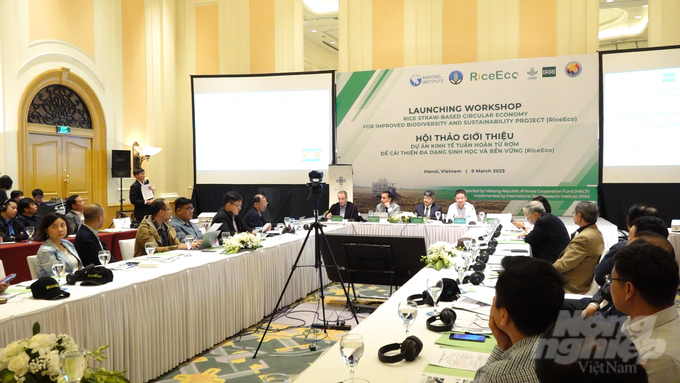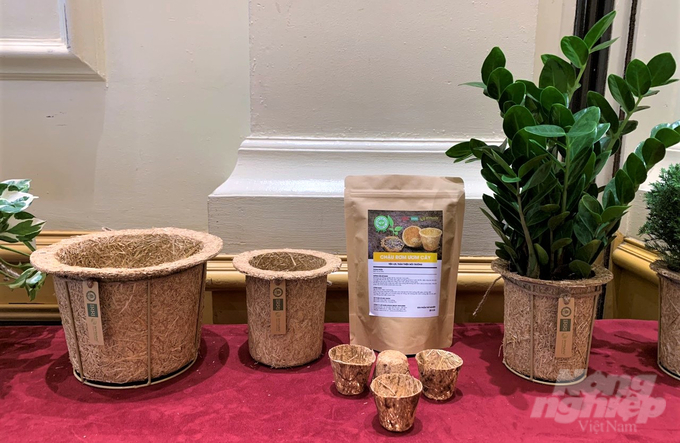On March 9th, the International Rice Research Institute (IRRI) and the Ministry of Agriculture and Rural Development held a seminar in Hanoi to launch the RiceEco project to introduce the circular economy of straw and sustainable straw management solutions. based green development consultancy.
Dr. Nguyen Van Hung, IRRI Senior Scientist, RiceEco Project Manager, emphasized: “The project has applied the participation of public and private sector partners with many strengths in both policy, academia and replication, such as IRRI, Vietnam and Cambodia management and development partners and private companies hoping to accelerate the development of a “circular, only genuine, no by-products” value chain, increase revenue, be imported from straw, increase the value of products that meet international standards such as correspond to sustainable and low-emission rice production.

The launch seminar of the RiceEco project to introduce the straw circular economy was organized by IRRI in cooperation with the Ministry of Agriculture and Rural Development. Picture: Than Thuy.
According to Mr. Nguyen Nhu Cuong, Director of Crop Production Department, Ministry of Agriculture and Rural Development, Vietnam’s annual rice straw production is about 40 million tons, of which only about 10% is used for animal feed, fertilizer… and the largest Part of the rest is treated by burning copper, which both pollutes the environment and increases greenhouse gas emissions.
If this material is used effectively with good and appropriate technologies, it will bring high economic efficiency and increase the income of rice farmers.
By participating in the project, farmers can practice sustainable and organic rice cultivation technologies, use straw to make products from straw, such as straw mushrooms, cow feed and fertilizer, organic, bioplastics, and urban agriculture.

A number of products made from straw materials were exhibited at the workshop. Picture: Than Thuy.
In addition, the project also develops the management of straw collection and transportation with the support of mechanization and digital agriculture, making an important contribution to supporting the “Sustainable Development Project of 1 Million Hectares Specializing in High-Quality Rice Growing” in the context of green Growth in the Mekong Delta”.
The project “Circular Economy from Straw to Improve Biodiversity and Sustainability”, funded by the Mekong-Korea Cooperation Fund (MKCF), Mekong Institute, is supported by IRRI and partners from Vietnam and Cambodia and will be implemented over a period of 3 years from 2023 to 2026.
The goal is to accelerate the development of a circular value chain with only primary products without by-products, increase revenue from straw, improve products to meet international standards such as sustainable and low-emission rice production, of which the project will reuse about 80% The rice straw collected in the field is used and processed.

